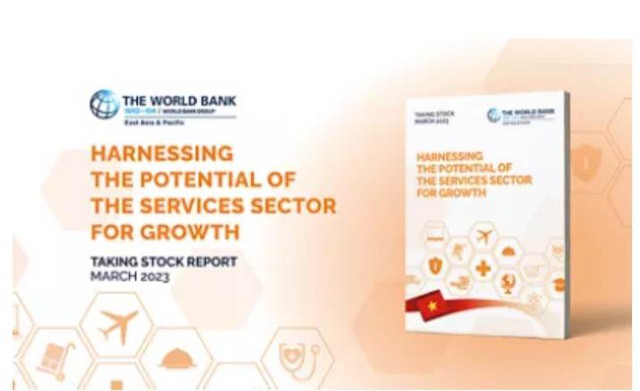Viet Nam’s economy forecast to grow by 6.3% in 2023: WB
Viet Nam’s GDP growth is expected to grow by 6.3 percent in 2023, the World Bank (WB) said in its taking stock report themed “Harnessing the potential of the service sector for growth” released on March 13.

According to the WB, Viet Nam's economy experienced a strong rebound in 2022, with growth reaching 8.0 percent, exceeding its average rates of 7.1 percent from 2016 to 2019.
This growth was partly due to a low base effect, driven by a rebound in domestic private consumption following COVID-19 and solid performance in export-oriented manufacturing.
However, the public sector's contribution to growth was limited due to weak execution of public investment programs.
While employment recovered to pre-COVID-19 levels in 2022, weaker global demand led to slowing orders and exports in the fourth quarter of 2022, and to renewed labor market pressures.
Consumer Price Index (CPI) inflation averaged 3.1 percent. Viet Nam's financial sector experienced increased pressure in 2022 while fiscal balances are estimated to register a surplus.
In 2013, the services-sector growth will moderate as low base-effects from post-COVID-19 fade. The main driver of growth will be domestic demand, which may be affected by higher estimated inflation (4.5 percent average) in 2023. Given softer external demand, contribution of net exports will weigh on growth.
The economy is expected to benefit from the partial implementation of the capital investment of the 2022-2023 Economic Support Program.
An agile monetary policy—closely coordinated with fiscal policy objectives—would help keep domestic inflation under control, the WB suggested.
Viet Nam has the fiscal space to implement measures to boost growth, unlike many other countries, shared WB Country Director for Viet Nam Carolyn Turk.
Effective implementation of priority public investments is key to support growth, both in the short-term and in the longer-term, she said, adding that fiscal and monetary policies must be synchronized to ensure that support to the economy and macroeconomic stability are achieved effectively.
Harnessing potential of services sector for growth
The services sector has become the largest sector of Viet Nam's economy, growing from 40.7 percent of GDP in 2010 to 44.6 percent of GDP in 2019.
The sector's share of employment has increased from 29.6 percent in 2010 and 35.3 percent in 2019. As the second-largest source of jobs, the sector has absorbed a significant portion of labor leaving the agriculture sector.
However, Viet Nam's services sector's productivity and employment performance lags behind its peers.
Despite increasing by 34.3 percent between 2011-2019, Viet Nam's services sector labor productivity (measured by value-added per worker) remains well below that of many regional and aspirational peers.
For example, Viet Nam's services sector labor productivity (measured by value added per worker) was US$5,000 per worker in 2019, it is still well below comparators, including Malaysia (US$20,900), the Philippines (US$9,300), and Indonesia (US$7,300).
Looking ahead, if properly leveraged, services can play a crucial role in supporting Viet Nam's sustained productivity growth and achieving its goal of becoming a high-income economy by 2045.
All high-income economies have a large services sector that provides the largest sources of employment and value addition. The small scale of firms, restrictions to services trade, low technological adoption and few inter-sectoral linkages affect the productivity of the services sector.
Policy reforms are necessary to unlock the sector's potential to contribute to Viet Nam's sustained economic growth, noted the WB.
source: https://en.baochinhphu.vn/
More Articles
- • Viet Nam’s AI leadership status is blossoming: Forbes
- • Viet Nam maintains competitive advantage in manufacturing: HSBC
- • ADB commends Viet Nam for maintaining stable macro-economic environment in 2022
- • WB Lead Country Economist: Viet Nam has strong macro-economic performance in 2022
- • ADB upgrades 2022 growth forecast for Viet Nam to 7.5%
- • Standard Chartered raises Viet Nam's 2022 GDP growth forecast to 7.5 percent
- • Viet Nam’s GDP growth in January-September hits 12-year high
- • Gov’t continues to cut land rentals for pandemic-hit entities
- • Strong and forward-looking government support helps bring in high-profile FDI projects
- • FDI disbursement up 16.2% in Jan-Sept period


